
The Free Press

While Americans enjoyed a long holiday weekend of barbecue and backyard parties, France has endured a week of riots. The violence began on June 27—the day that 17-year-old Nahel Merzouk was killed by a policeman in the Parisian suburb of Nanterre during a traffic stop. Since then, more than 45,000 policemen have been deployed across the country.
The damage is staggering. According to the Ministry of the Interior, the rioters have burned more than 5,000 cars; more than 1,000 buildings have been looted or destroyed; roughly 250 police stations were attacked; and more than 750 cops were wounded. Businesses across the country have reported $1.1 billion in losses.
What has driven so many to the streets? What explains this violence?
The easy thing for Americans to do is to look at the sequence of events that have played out over the past few days—a person of color killed by the cops; an outcry against “police brutality” and “systemic racism”; violent riots—and to draw the analogy to George Floyd’s murder and America in the summer of 2020. Indeed, that is what many are doing.
Is this a fair read of the situation? We reached out to French writer Marc Weitzmann, who has covered everything from globalization to identity politics to antisemitism for Le Monde and Tablet, among other outlets. He said: no, it is not.
“This is politically convenient thinking that erases the differences between these two specific countries, their specific histories, and their specific problems. To draw this parallel is to replace reality with clichés,” he told us.
Instead, Weitzmann urged anyone trying to understand the situation to look at a few factors.
Poverty and alienation:
First, he says, look to the world—or what he calls the “anti-world”—of the housing projects known as les cités, which are clustered around big cities like Paris, Marseille, and Lyon, and include large numbers of migrants from North Africa, sub-Saharan Africa, the former Yugoslavia, Pakistan, and the Middle East. In these places, Weitzmann points out, “the poverty rate reaches 43 percent, and the unemployment rate almost 19 percent. The annual income per household does not exceed 14,000 euros.”
It’s not simply the lack of opportunity, he argues. “The cités exude, even in their brutalist architecture, a feeling of despair.”
We don’t know much about the world in which Nahel Merzouk grew up—at least not yet. But this is the world that the rioters—some of them as young as 12—come from. It could not be further from the France most Americans see when they visit Paris.
Social media:
The one thing that nearly all the kids of les cités have is Telegram or Snapchat, which boasts 20 million daily French users. “It’s much easier to organize a riot these days—as in ‘let’s do the Vuitton store tomorrow at 3 p.m.,’ ” says Weitzmann.
The other thing is that these platforms “also offer everyone else outside les cités a window into this world, which they sort of know about but rarely glimpse for themselves—including the bizarrely cheerful attitude of the protesters. Anyone who has been watching cannot help but notice the strange, festive atmosphere of these riots—an aimless, almost orgiastic violence.”
The post-colonial paradox:
Of course, Weitzmann says, France could have done more to assimilate émigrés from Morocco and Algeria. But it didn’t. Partly that was because of racism. But it was also because of economics and geopolitics.
In the early eighties, France relied heavily on oil and gas from Morocco and Algeria—both of which were run by nationalist regimes that did not like the fact that hundreds of thousands of Moroccans and Algerians were moving to the country that had, until recently, colonized them. In fact, it was understood in Paris, Weitzmann argues, that “absorbing Algerians and Moroccans into France would be viewed as a casus belli by the nationalist regimes in Algiers and Rabat.”
At the same time, Moroccan and Algerian officials did not want their countrymen who had emigrated to come back—they were assumed to be infected with Western ideas. “So, countless immigrants pouring into the cités found themselves in a liminal place—they were not at home, but they had no home to return to,” Weitzmann says. “They were stuck. And this bred a fury and resentment that have steadily, dangerously grown over the decades.”
So that’s one sharp view from Paris. Abe Greenwald, the author of today’s essay and the executive editor of Commentary magazine, saw a different meaning—or perhaps simply a broader one—in the flames.
He makes the case below that the protests, paradoxically, are a sign of our enormous progress. It’s a provocative argument and we’d love to know what you think in the comments. —BW
The most recent riots in France are winding down. It took the deployment of 45,000 police officers nationwide to quell the violence and arson that erupted in response to the June 27 police shooting of Nahel M., a teenager of Algerian and Moroccan descent. Between that day and this one, rioters destroyed hundreds of buildings, set thousands of cars on fire, and attacked the home of a suburban mayor, injuring his wife and one of his children before they fled.
According to reports, the rioters were mostly young, and many of them seemed to be ethnic minorities. Such details, along with the event that sparked the violence, make it easy to place the riots neatly in one of several categories depending on your ideological framework. This was either about failing Muslim assimilation, police brutality, systemic racism, or some combination of the bunch. And since we are so often made to understand that racism is the defining issue of the West, you can explain what just happened as another spasm on the way to our long-overdue reckoning.
This is true as far as it goes: Immigrants to France from North Africa and the Middle East do face discrimination. Many Muslims who reside in housing projects live in a country far removed from the France of the American imagination. Their lives in the banlieues are marked by a chronic lack of social services, from childcare to medicine to education.
But none of this goes anywhere near far enough to explain the orgy of violence we’ve just witnessed. The latest riots are only a piece of a larger mass fever sweeping not just Paris or France or Europe but all of the West.
It was only in May, two months ago, when hundreds of thousands of rioters flooded through France to protest Emmanuel Macron’s move to raise the national retirement age from 62 to 64. Two months before that, more than a million French came out for the same cause. France has seen so many protests in recent years that we barely remember being captivated by the 300,000 Yellow Vest demonstrators who called for populist reforms to the French economy and government in 2018.
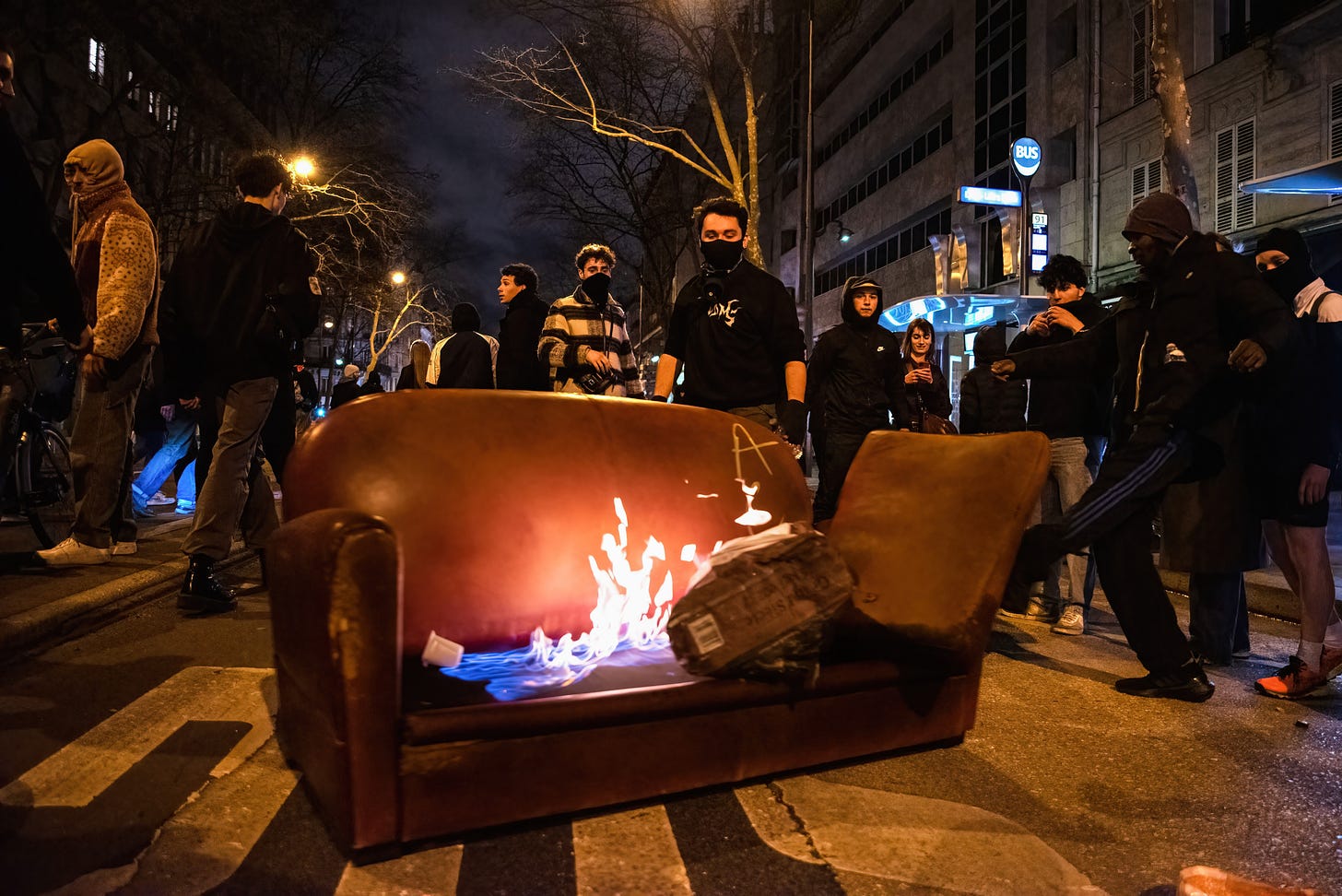
Massive protests have been rising in the West for years. In the United Kingdom, Spain, Canada, the United States, New Zealand, the Netherlands, Germany, Israel—you name it—activist armies have been taking to the streets in greater numbers and frequency. And the nominal causes are all over the place: anti-coal protests, cost-of-living protests, farmer protests, trucker protests, anti-immigration protests, anti-capitalist protests, and, of course, Covid-lockdown and police-brutality protests.
It’s tempting to point to the seismic events of 2020—the pandemic and the murder of George Floyd—as the catalyst for this increased instability. But the rise goes back further. According to the Center for Strategic and International Studies (CSIS), “Mass protests increased annually by an average of 11.5 percent from 2009 to 2019 across all regions of the world.” The upheavals of 2020 only exacerbated a growing trend. In the U.S., recall that Occupy Wall Street, Black Lives Matter, and the Women’s March all managed to seize our attention before we ever heard the word Covid.
As the CSIS report notes, we are in an “age of global mass protests.” But what sets this wave of tumult apart from, say, the rash of protests in autocratic countries at the end of the Cold War, is that Western democracies have been swept up in the action.
So what’s going on? Why are Western populations now so primed to explode? If you’re exercised over a given political or social cause, you’ll see that cause as the explanation. But are all these causes coincidentally coming to a head at the same time? Are Western countries staring at once into the multiple abysses of racism, state-sanctioned brutality, and economic adversity?
I’d argue just the opposite. The West has made such extraordinary—indeed, historically unique—progress in reducing suffering on a large scale that we’re now left grasping for new ideals and new aspirations to fulfill. This is not to say that everything is perfect. But the current penchant for protests and riots is profoundly out of proportion with the relatively small-scale challenges we still face.
Our accomplishments on human rights, freedoms, and the alleviation of hardship are so gargantuan that statistical comparisons with previous ages are made absurd. In the twentieth century, industrial-scale racism emanating from Western Europe killed millions of Jews and brought the world to war. In the U.S., Jim Crow segregation was the law of the land in the South while de facto segregation reigned elsewhere. In the twenty-first century, we seize on statistically rare police shootings as evidence of an ongoing genocide. You want to know what French barbarity looks like? The guillotine was still in use in the late 1970s. In the previous century, countries in Western Europe saw genuine famines. Today, Western Europe (and America) is fighting an obesity crisis, with the United Kingdom leading the pack.
The widespread poverty known to previous ages now seems science-fictional compared to life in today’s West. Between 1960 and 2023, the French GDP per capita went from $1,334 to $43,659, with other Western European nations showing similar growth trends in income and consumption. In the U.S. over the same time period, per capita GDP rose from $3,007 to $70,249. It’s not noted nearly enough that the life of an average citizen of a modern Western country makes the existence of an old-world aristocrat look pauperized by comparison. And the reduction in global poverty driven by Western trade, industry, aid, and debt forgiveness over the past decades has been even more astounding. Between 1990 to 2017 alone, the global poverty rate fell from 36 percent to 9 percent.
We’ve stuffed ourselves to the gills with the good things that we’ve created. But we are still human beings—the one species on the planet that yearns for meaning. And we don’t know where to turn next. In a different age, many would turn to their faith. But in the West, religion has been on a steep decline that crosses the rising rate of mass protests in an X pattern. So aimless activists protest and riot and embrace causes that they hope will bring needed shape to their moral lives.
It’s worth noting that the symptoms of our cultural overabundance go beyond the political. What is the sudden surge of interest in virtual reality but an unapologetic declaration that we’ve grown bored with the world as it is? The AI hype, too, heralds a kind of surrender. As if we’ve decided to let the gadgets take it from here.
In 1929, the Spanish philosopher José Ortega y Gasset wrote a very flawed (and very anti-democratic) book titled The Revolt of the Masses. In it, however, Ortega y Gasset offers this one gem: “When what was before an ideal becomes a component part of reality, it inevitably ceases to be an ideal.” That’s the dilemma facing the stuffed and starved citizens of the West.
How do we see ourselves out of this? The way out surely begins with gratitude. Some appreciation for how far we’ve come would go a long way toward getting our progress back on track. But gratitude is antithetical to the false promise of mass protest. And so, we may have to wait for the new ideals and new tactics to fail before reclaiming the aspirations on which our civilization was built.
If you believe in our work, become a paid subscriber today:


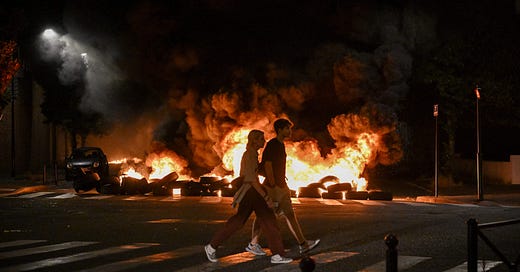




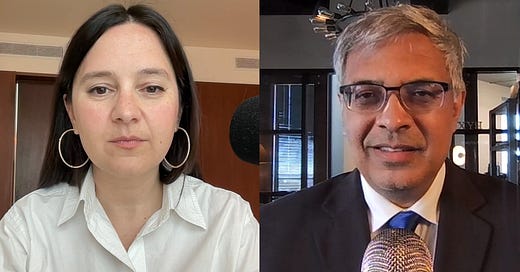



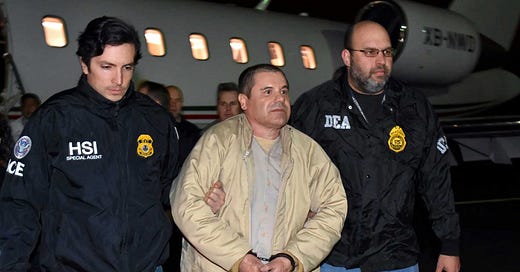



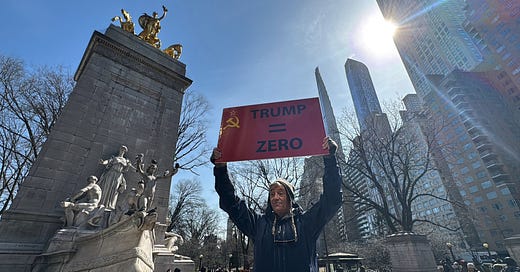
Is democratic chaos the opposite of organized repression? If we agree that the French Revolution was the beginning of modern history with the first popular revolution against rigid totalitarianism, then we can see that popular unrest is unavoidable in large and diverse societies. The Revolutions of 1848 in Europe led to uprisings throughout Europe, and they initially failed, but they did bring about the ascent of labor movements and a merchant and factory worker middle class. These uprisings were the cost of progress. But even in Revolutions, just causes can mutate into a beehive of destructive and mindless frenzy. Civil protest is good for a society, but what about uncivil protest? The black inner city riots of large American cities in the 1960’s resulted in white flight and the decay of many great cities. Did such destruction serve the needs of any group except for the fringe left that believed in destroying society before rebuilding it? As historical Monday morning quarterback, I think city and state governments should have called out the National Guard and calmed things down with water cannon once the fires and destruction began. Too many politicians are afraid of their legacy and there desire to be reelected. The French in the current riots should have brought out the water cannon. The governors of Washington state and Minnesota should have called out the guard and water cannon for the BLM vandalism and breakdown in social order in city centers. It is abominable that a police station was surrendered to communards in Seattle and set afire. France, like the US, is a polarized society with political extremes. Jean-Marie Le Pen must be pondering a return to the fray.
Interesting piece. I think the author is correct that today's mass protesters are essentially spoiled brats & ingrates (Though he's too polite to put it that way). The irony of all their self-congratulation (they are the "resistance," authorities are "fascists," etc., is that if Western governments were really committing genocide, smashing skulls, etc., most of them would scram and hide--as most victims of history's worst have tried to do. Don't underestimate the role of Islamist fanaticism and general dysfunction here--these are the same people who spawned the murderers of 9-11; who tortured Ilan Halimim may he rest in peace; who have not allowed Israelis one day of peace since modern Israel was reborn and who, given a chance, will wreck civilization. It isn't every Arab Muslim and there are good people in every society, but on the whole, let's get real, France made a giant error in letting masses of them in. That's the obvious and sad truth--their way of life is simply not congruent with Western democracy. Time for the West to batten down the hatches, wish the Third world well, and finally get it that these people's problems are not our responsibility.